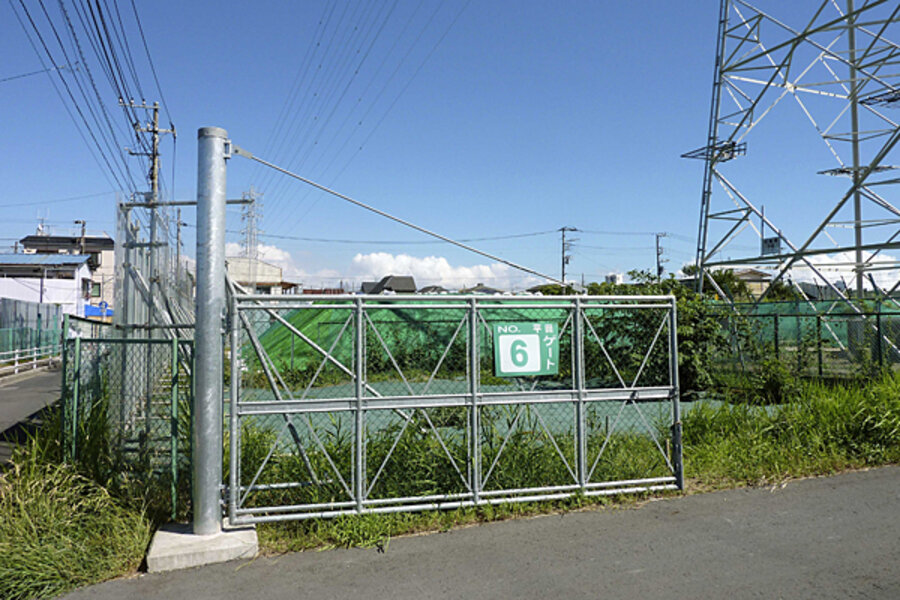In graying Japan, scandal over 'missing' 100-year-olds
Loading...
| Tokyo
It could have the makings of a barely credible mystery novel: dozens of missing senior citizens, the circumstances of their disappearance clouded by suspicions of foul play by their closest relatives.
But the search now under way for dozens of missing Japanese aged 100 or over is proof that fact can indeed be stranger than fiction.
Japan’s failure to keep tabs on its oldest residents is not only an administrative embarrassment: It also casts doubt on the health of family and community ties, and could even mark the discovery of a hidden wave of pension fraud in one of the world’s fastest-graying societies.
Supercentenarians around the world
At the time of writing, 75 centenarians remain unaccounted for in 19 of the country’s 47 prefectures. The Health Ministry, meanwhile, is reportedly investigating cases involving 840 people over the age of 85 in connection with potentially fraudulent pension claims.
The extraordinary search began last week after it was discovered that a 113-year-old woman listed as Tokyo’s oldest resident had not been seen for more than 20 years. When welfare officials attempted to contact Fusa Furuya at her home in the capital, her 79-year-old daughter told them she hadn’t been seen since around 1986.
The officials were directed to a second address just outside the city, only to find that Furuya’s “home” had been bulldozed to make way for a highway.
Days earlier, police found that Sogen Kato, listed as Tokyo’s oldest man, had been dead for more than three decades. They discovered his mummified corpse, still in its bedclothes, at the home of his octogenarian daughter and her family, 32 years after he reportedly retreated to his room to become a “living Buddha."
Relatives of Kato, who would have been 111, have been arrested on suspicion of abandoning a body and receiving millions of yen in pension payments.
The scale of the centenarian crisis is in part a symptom of impressive improvements in living standards and healthcare. In 1963, there were only 153 centenarians in Japan. The number has since soared to 40,399, according to the Health Ministry, 4,800 of them in Tokyo.
The problem is also partly legal. Strict privacy laws introduced in 2005 have made the job of tracking down any Japanese citizen much harder. Welfare officials say they do not have the authority to forcibly inspect the homes of centenarians if other members of their family object. In many cases, local authorities in possession of personal data are unable to pass it on to social workers.
The government’s chief spokesman, Yoshito Sengoku, suggested the law would be amended if it was found to have prevented local governments from ensuring the wellbeing of elderly citizens.
Need to reform residency system
Experts say there is an urgent need for reform of the residency registration system if the embarrassment of the past week is not to be repeated.
“We have an old residency system, based on written registration, that depends on reports by third parties,” says Ryuichi Kaneko of the National Institute of Population and Social Security Research in Tokyo.
“We need to be able to identify people with something like a social security number, but there is opposition to that because of privacy concerns," he continues. "Ultimately this happened because of social change. The days when three or four generations of the same family would live under one roof are gone. Young people are increasingly isolated, with no family, no spouse, no children, and no prospect of grandchildren.”
Mr. Kaneko’s comments reflect a wider concern that the ties that once bound small communities have weakened with urban migration and the growth of high-rise communities, in which voicing concern about a neighbor is too easily interpreted as an unwarranted intrusion. The problem has been compounded by the reluctance of the police to interfere in what they regard as domestic problems.
The media lamented the lack of vigilance among neighbors and authorities, asking how people who had presumably lived in the same neighborhood for years could vanish and not be missed.
“What is worrisome is the weakening of elderly people's ties to their relatives and local communities in this fast-aging society,” the Yomiuri newspaper said. “The functions of local communities, in which residents keep an eye on elderly people through daily contact as neighbors, seem to be on the decline.”
Weakening social bonds
Prime Minister Naoto Kan echoed those concerns in parliament. “This is because human bonds are weakening,” he said. “Society as a whole tends to sever human relationships.”
In an ironic twist, the revelation that Furuya and Kato were missing or dead came as local authorities, having failed to contact either person directly for decades, attempted to update their records ahead of a national holiday held every September as a mark of respect for the elderly.
On that day, people who have turned or are about to turn 100, receive a silver chalice and congratulatory letter from the prime minister.
This week, local officials have been pursued by TV crews as they scuttle around Tokyo on bicycles in a desperate attempt to unravel the mystery of what some are calling the “missing Methuselahs” before the chalices are due to be handed out, this time in person.
Given Japan’s skewed demographics, the task of tracing its oldest citizens promises to become even more problematic. According to the projections by the population research institute, the number of centenarians will reach 128,000 over the next decade; by the middle of the century there will be more than 680,000.
“This is serious,” says Mr. Kaneko, “Not just for centenarians, but for the elderly population in general. The government is aware of the problem, but these structural changes are occurring so rapidly that we seem unable to adapt quickly enough.”





